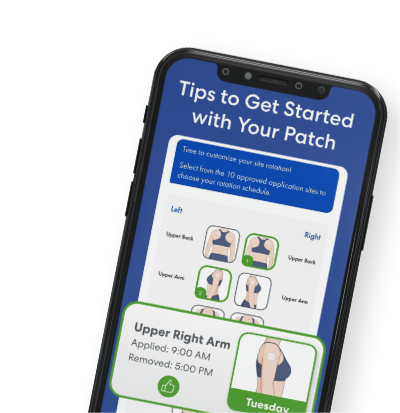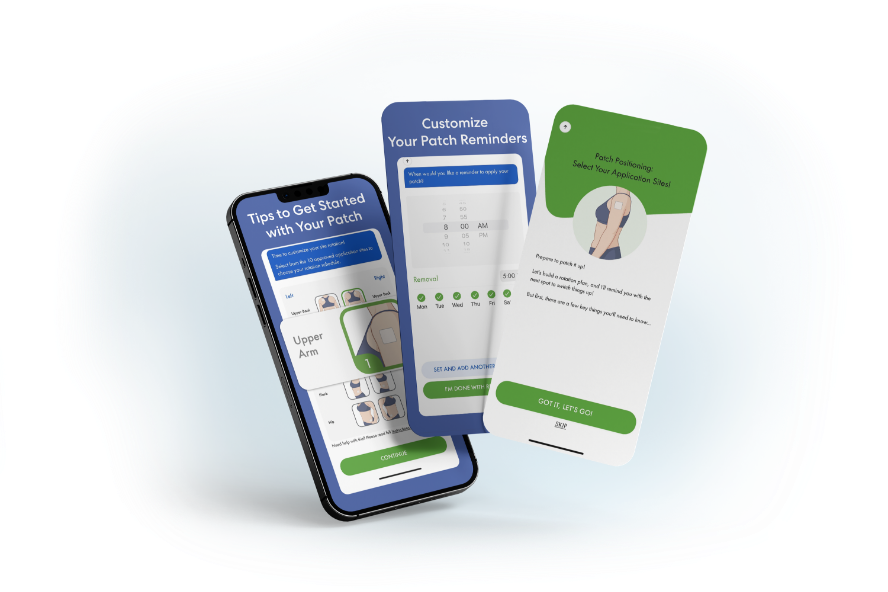
Helpful Information For You And Your Practice
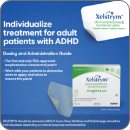
Get important dosing and administration information to help individualize transdermal treatment with XELSTRYM
Download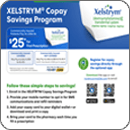
Review the simple steps to copay savings, as well as information on prior authorization support for a quicker and more automated process
DownloadPrior Authorization (PA) Resources
Save time and simplify the PA appeals process with downloadable letter templates and helpful instruction guides:
Sample Letters
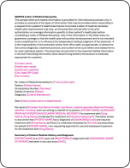
This downloadable template can be used to help simplify writing a personalized Letter of Medical Necessity for XELSTRYM and may help facilitate insurance coverage (re)approval.
Download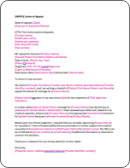
Challenge a denial of coverage with this customizable sample template, which can help simplify writing a Letter of Appeal for XELSTRYM.
DownloadHow-To Guides and Checklist
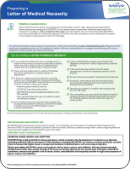
This helpful guide outlines key considerations to keep in mind when writing and submitting a Letter of Medical Necessity.
Download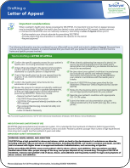
This useful guide provides an overview of the PA appeals process and outlines important considerations to help you draft an effective Letter of Appeal when your patient’s health plan denies coverage for XELSTRYM.
Download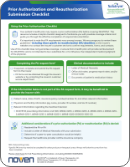
This comprehensive checklist outlines key eligibility criteria that may help facilitate the efficient preparation of PA and RA requests for the initial or continued use of XELSTRYM.
DownloadTools & Resources For Your Patients
The Mindful Patch app
The Mindful Patch app is an optional companion tool designed to support transdermal treatment with XELSTRYM. Features include:
 Educational resources and videos to help get patients started
Educational resources and videos to help get patients started Personalized medication schedule and reminders to help keep track of patch application and removal times
Personalized medication schedule and reminders to help keep track of patch application and removal times Copay savings opportunities, including information about the Noven C.A.N.™ Copay Assistance Program
Copay savings opportunities, including information about the Noven C.A.N.™ Copay Assistance Program Pharmacy locator tool to support treatment accessibility
Pharmacy locator tool to support treatment accessibility  ADHD factor logging allows patients to track trends and share with their providers via dashboards
ADHD factor logging allows patients to track trends and share with their providers via dashboards

Help your patients get started and stay on track with XELSTRYM treatment
Download the Mindful Patch leave behind to learn more.
Additional Patient Resources
Resources available within the Mindful Patch app can also be accessed from the XELSTRYM patient website or shipped directly to you.

Our Advocacy Support Partners
Professional organizations that can help your patients manage ADHD
Attention Deficit Disorder Organization (ADDA)
Children and Adults with Attention-Deficit/Hyperactivity Disorder (CHADD)
XELSTRYM (dextroamphetamine) transdermal system, CII is indicated for the treatment of Attention Deficit Hyperactivity Disorder (ADHD) in adult and pediatric patients 6 years and older. The use of XELSTRYM is not recommended in pediatric patients younger than 6 years of age because they had higher plasma exposure and a higher incidence of adverse reactions (e.g., weight loss) than patients 6 years and older at the same dosage.
IMPORTANT SAFETY INFORMATIONXELSTRYM has a high potential for abuse and misuse, which can lead to the development of a substance use disorder, including addiction. Misuse and abuse of CNS stimulants, including XELSTRYM, can result in overdose and death, and this risk is increased with higher doses or unapproved methods of administration, such as snorting or injection.
Before prescribing XELSTRYM, assess each patient’s risk for abuse, misuse, and addiction. Educate patients and their families about these risks, proper storage of the drug, and proper disposal of any unused drug. Throughout XELSTRYM treatment, reassess each patient’s risk of abuse, misuse, and addiction and frequently monitor for signs and symptoms of abuse, misuse, and addiction.
- Known hypersensitivity to amphetamine products or other components in XELSTRYM. Anaphylactic reactions, Stevens-Johnson Syndrome, angioedema, and urticaria have been observed.
- Use with monoamine oxidase inhibitors (MAOIs), or within 14 days of stopping MAOIs (including linezolid or intravenous methylene blue) due to increased risk of hypertensive crisis.
Risks to Patients with Serious Cardiac Disease: Avoid XELSTRYM use in patients with known structural cardiac abnormalities, cardiomyopathy, serious cardiac arrhythmia, coronary artery disease, or other serious cardiac diseases. Sudden death has been reported in patients with structural cardiac abnormalities or other serious cardiac disease who were treated with CNS stimulants at the recommended ADHD dosage.
Increased Blood Pressure and Heart Rate: CNS stimulants cause an increase in blood pressure (mean increase about 2 to 4 mm Hg) and heart rate (mean increase about 3 to 6 bpm). Monitor all patients for potential tachycardia and hypertension.
Psychiatric Adverse Reactions: Exacerbation of Pre-existing Psychosis: May exacerbate symptoms of behavior disturbance and thought disorder in patients with a pre-existing psychotic disorder. Induction of a Manic Episode in Patients with Bipolar Disorder: May induce a mixed/manic episode in patients. Prior to initiating XELSTRYM treatment, screen for risk factors for developing a manic episode (e.g., comorbid or history of depressive symptoms, or a family history of suicide, bipolar disorder, and depression). New Psychotic or Manic Symptoms: At recommended doses, may cause psychotic or manic symptoms (e.g., hallucinations, delusional thinking, or mania) in patients with no prior history of psychotic illness or mania. Discontinue XELSTRYM if symptoms occur.
Long-Term Suppression of Growth in Pediatric Patients: XELSTRYM is not approved for use and is not recommended in pediatric patients below 6 years of age. CNS stimulants have been associated with weight loss and slowing of growth rate in pediatric patients. Closely monitor growth (weight and height). Treatment may need to be interrupted in pediatric patients not growing or gaining weight as expected. XELSTRYM is not approved for use in pediatric patients below 6 years of age.
Peripheral Vasculopathy, including Raynaud’s Phenomenon: Stimulants, including XELSTRYM, are associated with peripheral vasculopathy, including Raynaud’s phenomenon. Signs and symptoms are usually intermittent and mild; very rare sequelae include digital ulceration and/or soft tissue breakdown. Careful observation for digital changes is necessary during treatment with stimulants. Further evaluation including rheumatology referral, may be appropriate for certain patients.
Serotonin Syndrome: Risk is increased when XELSTRYM is co-administered with serotonergic agents (e.g., SSRIs, SNRIs, triptans), and with CYP2D6 inhibitors. If it occurs, discontinue XELSTRYM and initiate supportive treatment.
Contact Sensitization: Use of XELSTRYM may lead to contact sensitization. Discontinue XELSTRYM if contact sensitization is suspected.
Application Site Reactions: During wear time or immediately after removal of XELSTRYM, local skin reactions such as pain, pruritus, burning sensation, erythema, discomfort, edema, and/or swelling were reported. Select a different application site each day to minimize skin reactions.
External Heat: Avoid exposing XELSTRYM to direct external heat sources during wear because both the rate and extent of absorption are increased.
Motor and Verbal Tics, and Worsening of Tourette’s Syndrome: Before initiating XELSTRYM, assess the family history and clinically evaluate patients for tics or Tourette’s syndrome. Regularly monitor XELSTRYM-treated patients for the emergence or worsening of tics or Tourette’s syndrome, and discontinue treatment if clinically appropriate. CNS stimulants, including methylphenidate, have been associated with the onset or exacerbation of motor and verbal tics. Worsening of Tourette’s syndrome has also been reported.
ADVERSE REACTIONSMost common adverse reactions (incidence ≥2% and greater than the rate for placebo) in pediatric patients 6 to 17 years treated with XELSTRYM were: decreased appetite, headache, insomnia, tic, abdominal pain, vomiting, nausea, irritability, increased blood pressure, and increased heart rate.
Most common adverse reactions (incidence of ≥5% and a rate at least twice placebo) in adults treated with lisdexamfetamine were: decreased appetite, insomnia, dry mouth, diarrhea, nausea, and anxiety.
USE IN SPECIFIC POPULATIONSPregnancy and Lactation: XELSTRYM may cause fetal harm. Breastfeeding is not recommended during XELSTRYM treatment.
Pediatric Use: The safety and effectiveness of XELSTRYM have not been established in pediatric patients below the age of 6 years.
Please click here for full Prescribing Information, including BOXED WARNING.
XELSTRYM (dextroamphetamine) transdermal system, CII is indicated for the treatment of Attention Deficit Hyperactivity Disorder (ADHD) in adult and pediatric patients 6 years and older. The use of XELSTRYM is not recommended in pediatric patients younger than 6 years of age because they had higher plasma exposure and a higher incidence of adverse reactions (e.g., weight loss) than patients 6 years and older at the same dosage.
IMPORTANT SAFETY INFORMATIONXELSTRYM has a high potential for abuse and misuse, which can lead to the development of a substance use disorder, including addiction. Misuse and abuse of CNS stimulants, including XELSTRYM, can result in overdose and death, and this risk is increased with higher doses or unapproved methods of administration, such as snorting or injection.
Before prescribing XELSTRYM, assess each patient’s risk for abuse, misuse, and addiction. Educate patients and their families about these risks, proper storage of the drug, and proper disposal of any unused drug. Throughout XELSTRYM treatment, reassess each patient’s risk of abuse, misuse, and addiction and frequently monitor for signs and symptoms of abuse, misuse, and addiction.
- Known hypersensitivity to amphetamine products or other components in XELSTRYM. Anaphylactic reactions, Stevens-Johnson Syndrome, angioedema, and urticaria have been observed.
- Use with monoamine oxidase inhibitors (MAOIs), or within 14 days of stopping MAOIs (including linezolid or intravenous methylene blue) due to increased risk of hypertensive crisis.
Risks to Patients with Serious Cardiac Disease: Avoid XELSTRYM use in patients with known structural cardiac abnormalities, cardiomyopathy, serious cardiac arrhythmia, coronary artery disease, or other serious cardiac diseases. Sudden death has been reported in patients with structural cardiac abnormalities or other serious cardiac disease who were treated with CNS stimulants at the recommended ADHD dosage.
Increased Blood Pressure and Heart Rate: CNS stimulants cause an increase in blood pressure (mean increase about 2 to 4 mm Hg) and heart rate (mean increase about 3 to 6 bpm). Monitor all patients for potential tachycardia and hypertension.
Psychiatric Adverse Reactions: Exacerbation of Pre-existing Psychosis: May exacerbate symptoms of behavior disturbance and thought disorder in patients with a pre-existing psychotic disorder. Induction of a Manic Episode in Patients with Bipolar Disorder: May induce a mixed/manic episode in patients. Prior to initiating XELSTRYM treatment, screen for risk factors for developing a manic episode (e.g., comorbid or history of depressive symptoms, or a family history of suicide, bipolar disorder, and depression). New Psychotic or Manic Symptoms: At recommended doses, may cause psychotic or manic symptoms (e.g., hallucinations, delusional thinking, or mania) in patients with no prior history of psychotic illness or mania. Discontinue XELSTRYM if symptoms occur.
Long-Term Suppression of Growth in Pediatric Patients: XELSTRYM is not approved for use and is not recommended in pediatric patients below 6 years of age. CNS stimulants have been associated with weight loss and slowing of growth rate in pediatric patients. Closely monitor growth (weight and height). Treatment may need to be interrupted in pediatric patients not growing or gaining weight as expected. XELSTRYM is not approved for use in pediatric patients below 6 years of age.
Peripheral Vasculopathy, including Raynaud’s Phenomenon: Stimulants, including XELSTRYM, are associated with peripheral vasculopathy, including Raynaud’s phenomenon. Signs and symptoms are usually intermittent and mild; very rare sequelae include digital ulceration and/or soft tissue breakdown. Careful observation for digital changes is necessary during treatment with stimulants. Further evaluation including rheumatology referral, may be appropriate for certain patients.
Serotonin Syndrome: Risk is increased when XELSTRYM is co-administered with serotonergic agents (e.g., SSRIs, SNRIs, triptans), and with CYP2D6 inhibitors. If it occurs, discontinue XELSTRYM and initiate supportive treatment.
Contact Sensitization: Use of XELSTRYM may lead to contact sensitization. Discontinue XELSTRYM if contact sensitization is suspected.
Application Site Reactions: During wear time or immediately after removal of XELSTRYM, local skin reactions such as pain, pruritus, burning sensation, erythema, discomfort, edema, and/or swelling were reported. Select a different application site each day to minimize skin reactions.
External Heat: Avoid exposing XELSTRYM to direct external heat sources during wear because both the rate and extent of absorption are increased.
Motor and Verbal Tics, and Worsening of Tourette’s Syndrome: Before initiating XELSTRYM, assess the family history and clinically evaluate patients for tics or Tourette’s syndrome. Regularly monitor XELSTRYM-treated patients for the emergence or worsening of tics or Tourette’s syndrome, and discontinue treatment if clinically appropriate. CNS stimulants, including methylphenidate, have been associated with the onset or exacerbation of motor and verbal tics. Worsening of Tourette’s syndrome has also been reported.
ADVERSE REACTIONSMost common adverse reactions (incidence ≥2% and greater than the rate for placebo) in pediatric patients 6 to 17 years treated with XELSTRYM were: decreased appetite, headache, insomnia, tic, abdominal pain, vomiting, nausea, irritability, increased blood pressure, and increased heart rate.
Most common adverse reactions (incidence of ≥5% and a rate at least twice placebo) in adults treated with lisdexamfetamine were: decreased appetite, insomnia, dry mouth, diarrhea, nausea, and anxiety.
USE IN SPECIFIC POPULATIONSPregnancy and Lactation: XELSTRYM may cause fetal harm. Breastfeeding is not recommended during XELSTRYM treatment.
Pediatric Use: The safety and effectiveness of XELSTRYM have not been established in pediatric patients below the age of 6 years.
Please click here for full Prescribing Information, including BOXED WARNING.


